How to choose polystyrene for home insulation?
The insulated walls protect the house much better from the penetration of cold in the winter, allowing significant savings on heating. But when it comes to the process of warming itself, each of us wants to get the most effective result and at the same time save more money. Under these requirements, such thermal insulation materiallike polystyrene foam. Consider its main advantages and disadvantages, as well as the nuances of choice.
Pros and cons
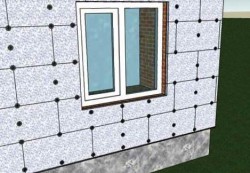 Merits polystyrene has much more than flaws, but about everything in order. The first advantage, which allows the use of polystyrene as a heater, is its excellent thermal insulation properties. In addition, this material is not able to absorb moisture, and therefore vapor barrier is not needed, and in the future this useful property will allow you to not know the problems with the development of mold and fungus.
Merits polystyrene has much more than flaws, but about everything in order. The first advantage, which allows the use of polystyrene as a heater, is its excellent thermal insulation properties. In addition, this material is not able to absorb moisture, and therefore vapor barrier is not needed, and in the future this useful property will allow you to not know the problems with the development of mold and fungus.
Polyfoam is a fairly lightweight material, so no work will be required to strengthen the foundation, and working with it is very simple. This is a durable material that does not deform over time and does not change its properties. The low price for this type of insulation is a decisive argument for its choice.
But not without disadvantages. The main one is combustibility: polystyrene easily supports combustion, while emitting corrosive toxic smoke. That is why for home insulation it is better to choose a material saturated with an antiprene composition that prevents self-ignition. In addition, rodents often make minks in the foam, which is a common reason for abandoning this type of insulation, but if the installation is done according to all the rules, then this trouble can be avoided.
What is polystyrene?
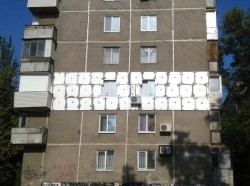 That material, which we used to call polystyrene foam, can be made in a different way, eventually forming a material with different properties and appearance. So, the most popular polystyrene foam. He can be press: household appliances are often packed in such a way, but the material looks like a lot of small balls tightly pressed to each other. Such material easily crumbles and breaks, and, of course, is not suitable for insulation. No-stress it is much more difficult to crush foam, in it granules are very tightly connected, but it is also more difficult to manufacture. But both the one and the other foam have one drawback - the presence of pores in which moisture vapor can fall, and subsequently condense and destroy the material. That is why only warming is used extruded polystyrene, which is devoid of all these shortcomings and can last about 60 years.
That material, which we used to call polystyrene foam, can be made in a different way, eventually forming a material with different properties and appearance. So, the most popular polystyrene foam. He can be press: household appliances are often packed in such a way, but the material looks like a lot of small balls tightly pressed to each other. Such material easily crumbles and breaks, and, of course, is not suitable for insulation. No-stress it is much more difficult to crush foam, in it granules are very tightly connected, but it is also more difficult to manufacture. But both the one and the other foam have one drawback - the presence of pores in which moisture vapor can fall, and subsequently condense and destroy the material. That is why only warming is used extruded polystyrene, which is devoid of all these shortcomings and can last about 60 years.
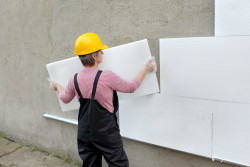 In addition, there are other types of polystyrene foams on the market that are not used for insulation, so we will mention them briefly. Polyurethane foams often used in furniture manufacturing. In fact, this is the most common foam rubber, which turns yellow in the sun, short-lived, quickly crumbles, is very flammable and emits a lot of toxic substances during combustion.
In addition, there are other types of polystyrene foams on the market that are not used for insulation, so we will mention them briefly. Polyurethane foams often used in furniture manufacturing. In fact, this is the most common foam rubber, which turns yellow in the sun, short-lived, quickly crumbles, is very flammable and emits a lot of toxic substances during combustion.
Polyvinyl chloride foam in many ways similar to extrusion, but when burning emits much more toxic substances. Polyethylene foam familiar to many of us: often fragile things are wrapped in thin sheets of it.
Plate Size
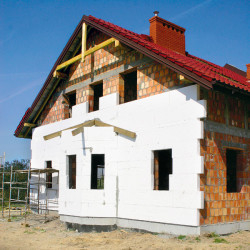 Foam slabs are produced mainly in three sizes: 0.5 * 1, 1 * 1 and 2 * 1 m.It is immediately worth noting that this insulation is easy to cut, so no problems should arise during the installation process. So, it is better to choose the material that is most suitable for the area of the insulated surface. As a rule, for warming balconies, loggias and apartments in apartment buildings opt for slabs measuring 0.5 * 1 m: it is most convenient to work with them, they are more economical, and all kinds of complex details facade it will be easier to insulate with such material. But if you need to insulate a private house, the walls of which differ in a regular flat surface, then it makes sense to use slabs 1 * 1 m in size. The largest material, slabs 2 * 1 m in size are used less often for especially large buildings.
Foam slabs are produced mainly in three sizes: 0.5 * 1, 1 * 1 and 2 * 1 m.It is immediately worth noting that this insulation is easy to cut, so no problems should arise during the installation process. So, it is better to choose the material that is most suitable for the area of the insulated surface. As a rule, for warming balconies, loggias and apartments in apartment buildings opt for slabs measuring 0.5 * 1 m: it is most convenient to work with them, they are more economical, and all kinds of complex details facade it will be easier to insulate with such material. But if you need to insulate a private house, the walls of which differ in a regular flat surface, then it makes sense to use slabs 1 * 1 m in size. The largest material, slabs 2 * 1 m in size are used less often for especially large buildings.
What density is needed?
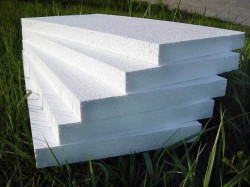 To warm the house, foam of different densities is used, depending on what goals are being pursued, and what exactly needs to be insulated. So, for wall insulation from the outside, it is better to opt for foam with a density of 25 kg / m³, if it is necessary to insulate the floor, then use plates more densely - 35 kg / m³, the same material is used to equip the roof. But for wall insulation from the inside, it is better to choose a foam with a density 15 kg / m³.
To warm the house, foam of different densities is used, depending on what goals are being pursued, and what exactly needs to be insulated. So, for wall insulation from the outside, it is better to opt for foam with a density of 25 kg / m³, if it is necessary to insulate the floor, then use plates more densely - 35 kg / m³, the same material is used to equip the roof. But for wall insulation from the inside, it is better to choose a foam with a density 15 kg / m³.
It is better not to use polystyrene with a density of 15 kg / m³ for insulation of external walls. Of course, this is not forbidden, but its durability, strength and reliability will be in question, which is easy to verify on your own, because it is enough to compress the material. As a result, you can get a less durable insulation, and the level of thermal insulation of such a foam is inferior to a more dense analogue. But it is worth noting that such material can be used for warming non-capital structures: stalls, small shops, storage rooms. Also, foam with a density of 15 kg / m³ can be used to warm some parts of the facade that are adjacent to the house, but do not require serious insulation: veranda, technical buildings, open balconies.
Polyfoam with a density of 35 kg / m³ for wall insulation is extremely rarely used: it copes with its tasks perfectly, but at a high price. In some cases, by the way, when the insulating properties are especially important, it is more advantageous to use a thinner sheet of a denser foam than an average density foam, but double the thickness. But in most cases, it is the material with a density of 25 kg / m³ that is in the highest demand.
Thickness
Foam thickness - a parameter that should be selected based on an individual combination of factors: wall thickness, wall material, climatic conditions, etc. That is why it is impossible to say that a foam cm layer 5 cm thick is suitable for absolutely everyone, although it is such a material that is most often used for insulation of apartment buildings in the temperate zone.
Everyone will be able to calculate the required thickness of the insulationusing the tables below. So, let's say you live in a house whose walls consist of two rows bricks. The heat transfer resistance in this case will be 0.405 m² * ° C / W. considering that the wall thickness is 54 cm. At the same time, the normative value, for example, for Moscow is 3.16 m2*0C / W, the difference is 2.755 m² * C / W, and this is what needs to be compensated with a heater, the thermal conductivity of which in our case is 0.031 W / m * ° C. It turns out that the thickness of the insulation will be 0.031 * 2.755 = 0.085m, which is 8.5 cm.
Polystyrene quality
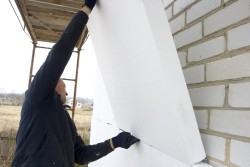 When all other parameters are determined, you need to evaluate the necessary material for quality. First, you need to ask quality certificates: Responsible manufacturers and sellers always supply the goods with the necessary documentation confirming its quality. Secondly, you need to make sure that the goods stored in appropriate conditions, So what on its packaging there is the necessary marking that reports on the basic properties of this material.Polyfoam should not be stored under direct sunlight: in this case, it loses part of its operational properties, it may begin to emit an unpleasant odor. It is also important that the material is stored in a well-ventilated area, and that the humidity is not more than 60%.
When all other parameters are determined, you need to evaluate the necessary material for quality. First, you need to ask quality certificates: Responsible manufacturers and sellers always supply the goods with the necessary documentation confirming its quality. Secondly, you need to make sure that the goods stored in appropriate conditions, So what on its packaging there is the necessary marking that reports on the basic properties of this material.Polyfoam should not be stored under direct sunlight: in this case, it loses part of its operational properties, it may begin to emit an unpleasant odor. It is also important that the material is stored in a well-ventilated area, and that the humidity is not more than 60%.
Attention should also be paid to polystyrene granules. They should be the same size and evenly spaced throughout the volume. If in some places there are voids, and the granules easily fall off, then such a product can hardly be called quality. In addition, it will not be superfluous to compare separate sheets of material among themselves: they must be absolutely identical in thickness, density, with smooth edges, of a snow-white color.




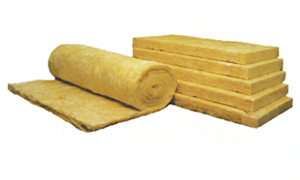
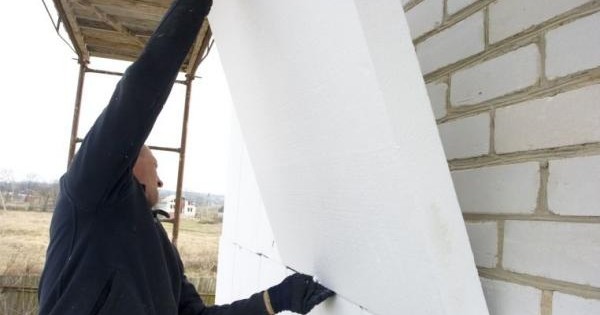
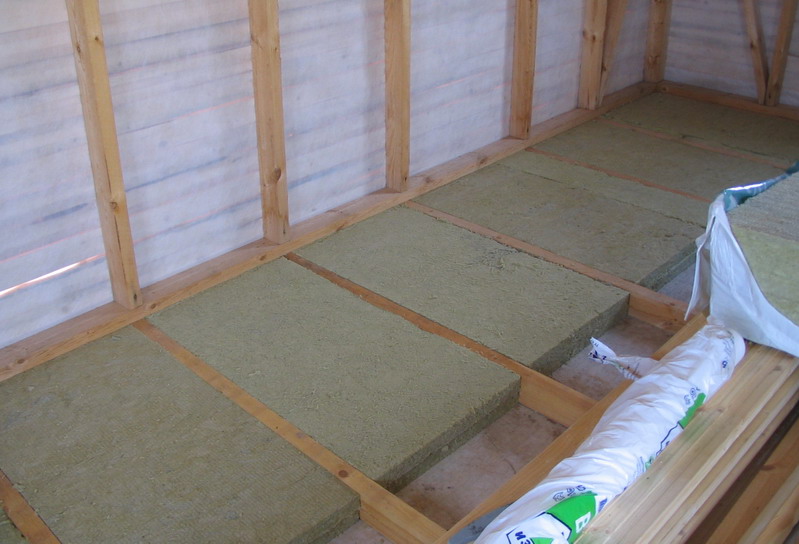
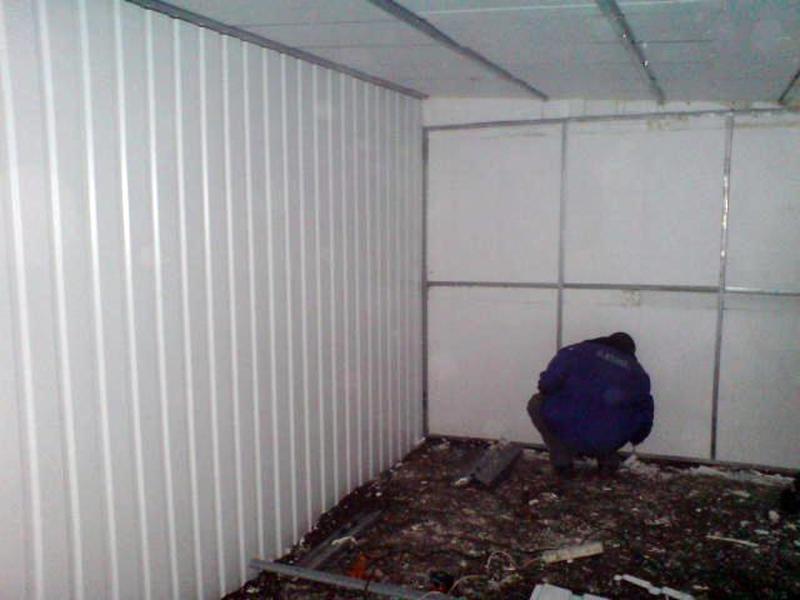


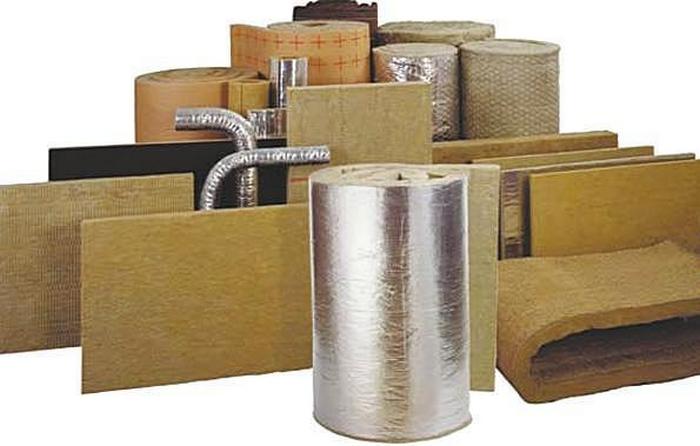
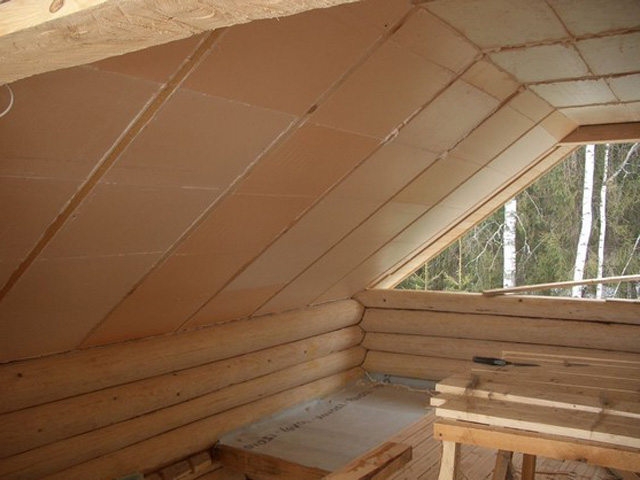
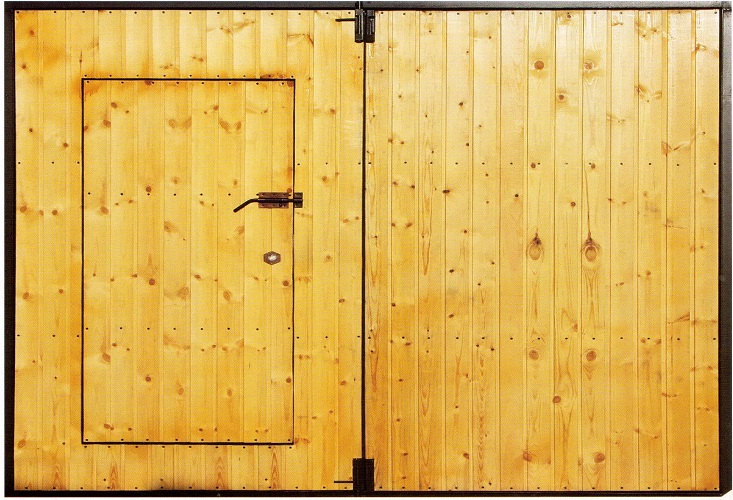

Thanks to the author informatively. In principle, it is ideal to lay a house in front of a facing brick. But as in the photo the apartment was insulated it is something :)))))))))
We are all so insulated. Only plaster then. Otherwise, everything is useless.
what you need, expanded polystyrene is one of the popular materials for insulation
As for me, polystyrene insulation is a good option, but it is better to use cotton wool. From cotton enough for 30 years, and polystyrene for 10 and then it will lose its properties.